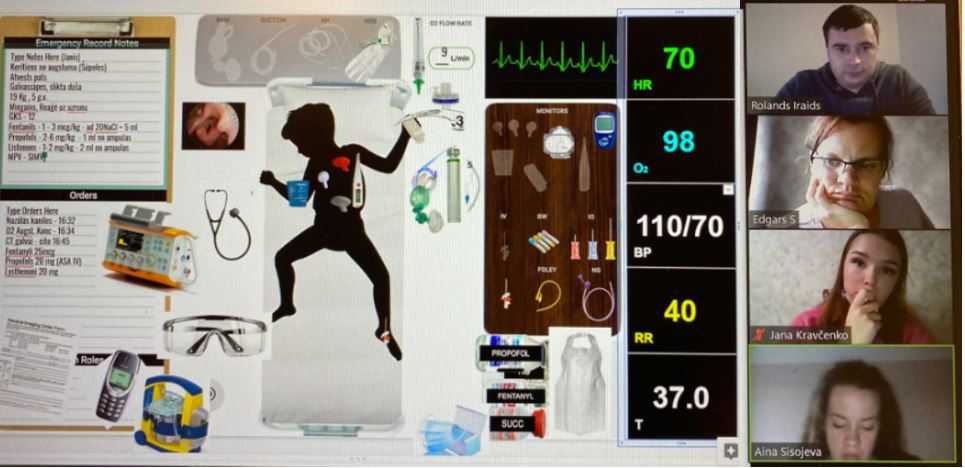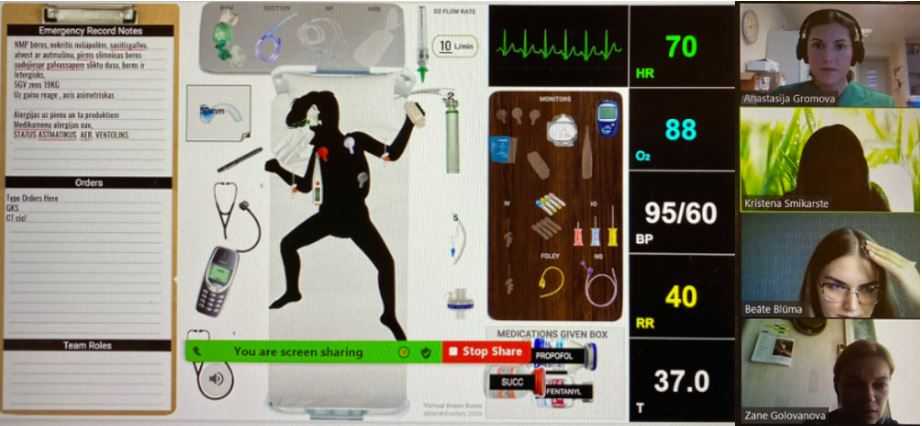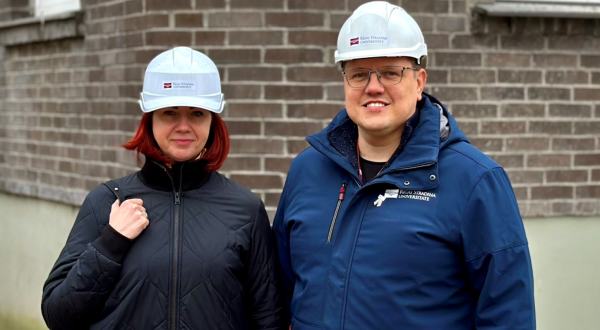Creative and Exciting Remote Classes Using E-Simulations
Restrictions and physical distancing during the COVID-19 pandemic have challenged lecturers around the world to come up with innovative ways to provide remote studies. At the end of October, an e-simulation was launched at the Rīga Stradiņš University (RSU) Medical Education Technology Centre (METC) for students from the Anaesthesiology, Intensive Care, and Emergency Medicine study courses.
Five scenarios were played out with the aim to supplement students’ skills in stabilising the condition of a critically ill child and to develop skills to care for patients in the intensive care unit. ‘Looking for alternatives that would allow students to develop clinical skills remotely, I realised that any clinical situation could be played out through virtual platforms with the students’ support. I developed a study plan on the Virtual Resus Room platform,’ says RSU assistant and METC simulation instructor Anastasija Gromova.

The structure of the Virtual Resus Room is simple and user-friendly. It gives lecturers the ability to use various audio- and visual effects to make everything as real as possible. The visuals are provided through a shared Google slide, which is designed to show the main equipment of the medical room. Every student and lecturer has the same slide open on their computer so that they can work with it in real time. Audio is provided through Zoom chat or by downloading a file from the slide. The lecturer can delegate roles to students or present a clinical case in real time. In turn, students have the possibility to comment and expand on the subject, divide responsibilities within the team, and jointly stabilise a virtual patient and play out the e-simulation scenario.
‘Students are very excited to join classes like this. What they most enjoy about participating in e-simulations is the fact that they can try something new remotely, acquire new skills, and, most importantly, work independently. It is a great opportunity to create the contents of a lesson, the script of how the scenario will play out, and to make the situation as creative as possible by visualising various medical interventions that the students perform,’ says Gromova.

Students are very positive about the e-simulations they have access to as these allows them to improve their clinical thinking, develop the right tactics and step sequence to provide medical care in different situations, and to improve leadership skills and the ability to work in a team. ‘I think that e-simulation as a field will develop in the future and will provide an opportunity to share experience with international colleagues,’ says Rolands Iraids, a student studying Anaesthesia, Intensive- and Emergency Care Nursing.
Related news
 RSU is growing and developing: major reconstruction underway in the main buildingDevelopment, For RSU Employees, For Students
RSU is growing and developing: major reconstruction underway in the main buildingDevelopment, For RSU Employees, For Students


